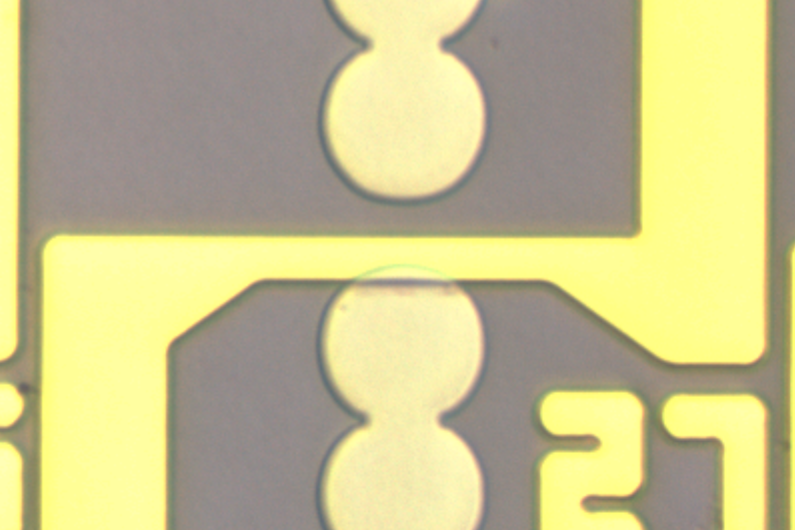A random access memory for storing living cells

Advances in circuits typically refer to breakthroughs in computers, cell phones, and other advanced electronic devices. However, a more general notion of circuits refers to any integrated system which can move objects along specific paths, switch them at intersections, and control large numbers of them in parallel. In a recent report published in Advanced Materials, researchers from Duke University and University of North Carolina-Chapel Hill have developed and characterized one of the basic switching elements of circuits, known as the transistor, which works with living cells instead of electrons.
The fundamental idea was first described in a publication in Nature Communications in 2014, in which researchers introduced a class of circuit elements which moves cells in microfluidic systems in a manner that resembles a random access computer memory. However, there had been no prior attempts to quantify the switching thresholds of the fundamental transistor device.
The recent breakthrough published in Advanced Materials sets the bar for future transistors by identifying the gate current thresholds required to switch single cells between different paths.
Lead author, Roozbeh Abedini-Nassab, a PhD student at Mechanical Engineering and Materials Science at Duke University said, "We have optimized the transistors to be able to operate at dramatically lower gate currents compared to ones introduced in our previous work. This work paves the way to forming large, single-cell memories. Moreover, we have demonstrated full read/write capabilities that allow for cells to be imported and exported from specific array sites."
The Fermi level is the technical term used to describe the voltage threshold that is required to turn on and off computer transistors. Characterizing the Fermi level is essential for identifying the operating regime and power consumption of electronic devices. In the present work, the authors have characterized a similar Fermi level for cell-based transistors, which provides the metric for scaling the system into large arrays.
As author Yellen puts it, "Similar to the billions of transistors used to direct the flow of information in computer systems, we aim to develop corollary abilities to direct the flow of single cells in microfluidic systems, albeit at a slightly smaller scale."
The ultimate goal is to use this platform to monitor rare cells and extract high priority ones for novel therapies to combat HIV and cancer. This work was supported by the Creative and Novel Ideas for HIV Research and NIH grants at Duke and UNC.
More information: R. Abedini-Nassab, D. Y. Joh, M. A. Van Heest, J. S. Yi, C. Baker, Z. Taherifard, D. M. Margolis, V. Garcia-Martinez, A. Chilkoti, D. M. Murdoch, and B. B. Yellen, Advanced Materials, DOI: 10.1002/adma.201502352 (2015).
B. Lim, V. Reddy, X. Hu, K. Kim, M. Jadhav, R. Abedini-Nassab, Y. Noh, Y. T. Lim, B. B. Yellen, and C. Kim, Nature Communications, 5, 3846 (2014).
Journal information: Advanced Materials , Nature Communications
Provided by Duke University

















